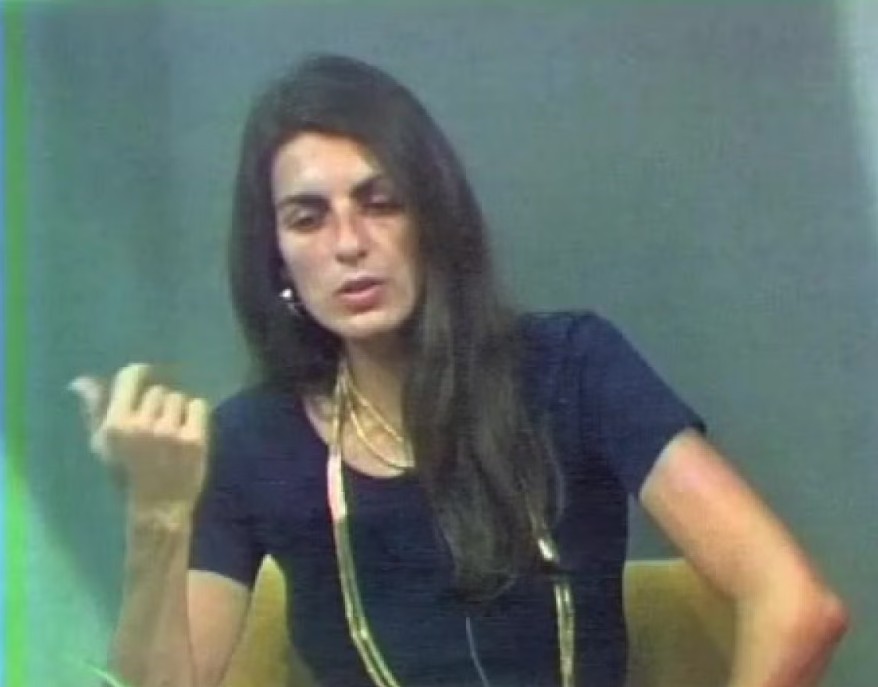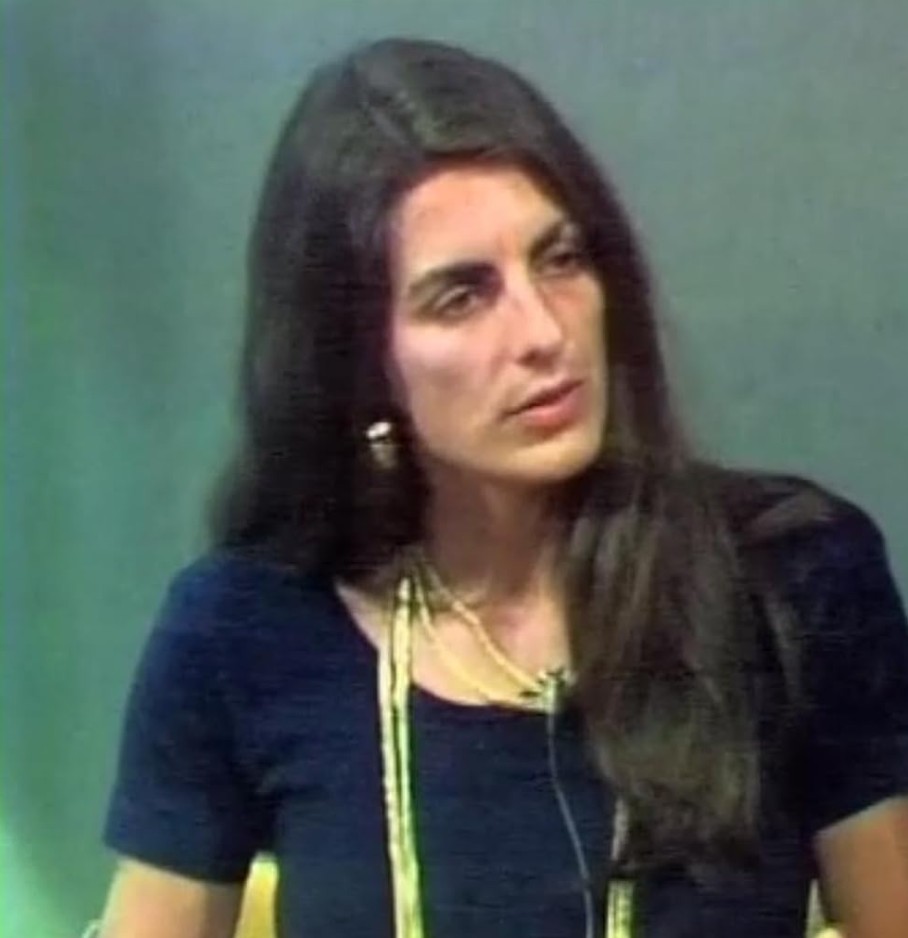Christine Chubbuck Video Sparks Debate on Journalism Ethics
Christine Chubbuck was a television news reporter whose career and life left a lasting and poignant mark on broadcasting history. Born on August 24, 1944, in Hudson, Ohio, she pursued journalism with a deep commitment to highlighting community issues and local affairs. Her career took her through several news stations, ultimately leading her to WXLT-TV in Sarasota, Florida, where she hosted the community affairs program Suncoast Digest. The Christine Chubbuck video from her final broadcast remains a profoundly significant and sensitive part of her legacy, illustrating the intense pressures inherent in the broadcasting profession.

However, Christine’s name became tragically linked to an unprecedented event on July 15, 1974. In a shocking moment, she became the first person to die by suicide on live television. This heartbreaking act not only stunned viewers but also ignited widespread discussions about the mental health challenges faced by those in high-pressure media roles, the ethical responsibilities of news organizations, and the urgent need for better mental health support within the industry.
The impact of Christine’s death resonated far beyond the immediate shock within the broadcasting world. It challenged societal perceptions of mental health, especially in demanding professions, and has since inspired debates, films, and scholarly analyses examining how media handles sensitive topics. Christine Chubbuck’s life and tragic passing remain a profound chapter in television history, serving as a sobering reminder of the human vulnerabilities that often exist behind the camera.
Contents
Video and Early Life
Christine Chubbuck was born on August 24, 1944, in Hudson, Ohio, into a family that valued education and public service. She was the daughter of Margretha D. “Peg” Chubbuck, a homemaker, and George Fairbanks Chubbuck, a World War II veteran and successful businessman. Christine was the eldest of three children, with two younger brothers, Greg and Tim, with whom she shared a close childhood bond.
Christine Chubbuck Final Broadcast Video A Sobering Reminder
Her academic journey began at the Laurel School for Girls in Shaker Heights, a Cleveland suburb, known for its rigorous curriculum and focus on developing leadership skills in young women. While at Laurel, Christine demonstrated an early passion for the arts and was actively involved in school theater productions. Her love of storytelling also shone through in her creation of the “Dateless Wonder Club” with friends a humorous reflection of their social lives.
After high school, Christine attended Miami University in Oxford, Ohio, for a year, initially majoring in theater arts. Seeking a more direct route to a career in media, she transferred to Endicott College in Beverly, Massachusetts, before ultimately moving to Boston University. There, she earned her degree in broadcasting in 1965. These formative years were pivotal in shaping her ambitions, providing her with the skills, determination, and vision needed to pursue a career in journalism.
Career Beginnings and Aspirations
Christine Chubbuck began her professional journey shortly after graduating from Boston University. Her first significant role was at WVIZ, a public broadcasting station in Cleveland, where she worked from 1966 to 1967. This position provided her with early exposure to the broadcasting world and invaluable behind-the-camera experience, solidifying her ambition to pursue a career in journalism.
In the summer of 1967, she attended a radio and television workshop at New York University, further honing her production and reporting skills. Later that year, she moved to Canton, Ohio, for a brief position before joining WQED-TV in Pittsburgh, Pennsylvania. At WQED, she served as an assistant producer for two local programs, Women’s World and Keys to the City, which focused on community issues and highlighted local talent.
By 1968, Christine shifted toward more technical roles, spending four years as a hospital computer operator and two years with a cable television company in Sarasota, Florida. These positions, though behind the scenes, expanded her understanding of broadcasting and telecommunications.
Her move to Florida marked a turning point. Christine first joined WTOG in St. Petersburg, working in the traffic department. This administrative role kept her connected to the industry and paved the way for her breakthrough at WXLT-TV (now WWSB), an ABC affiliate in Sarasota. At WXLT, she was hired as a reporter and given her own community affairs program, Suncoast Digest. The show allowed Christine to focus on local issues and give a voice to underrepresented members of the community, fulfilling her aspiration to influence and inform through journalism.
Suncoast Digest and Professional Life
At WXLT-TV, Christine Chubbuck became deeply engaged with her community through Suncoast Digest, which aired at 9:00 am. The program provided a platform for in-depth interviews with local figures, discussions on social issues, and segments highlighting community events. Christine actively sourced stories by inviting government officials, community leaders, and ordinary citizens to share their perspectives, creating a strong connection with her audience.

Her commitment to community service earned recognition when she was nominated for a Forestry and Conservation Recognition Award by the Bradenton district office of the Florida Division of Forestry. This nomination underscored her credibility as a journalist dedicated not only to reporting news but also to engaging with and positively impacting her community.
Personal Struggles and Challenges
Despite her professional accomplishments, Christine faced significant personal challenges. She battled depression for many years, a struggle known to her family but largely private. Her romantic life caused additional distress; her brother Greg recalled that a relationship ended due to their father’s disapproval, leaving a lasting emotional impact.
Health concerns also weighed heavily on her. Christine underwent surgery to remove her right ovary, which, coupled with medical warnings about her future fertility, intensified her emotional strain. Doctors informed her that if she did not conceive within two to three years, her chances of ever having children were slim, deepening her depression.
In the weeks leading up to her death, the pressures of her personal and professional life intensified. Though she had been seeing a psychiatrist, she discontinued the visits shortly before her passing. She frequently shared feelings of loneliness and despair with her family but never explicitly indicated suicidal intent. Still, she made subtle references to self-harm, including joking with a colleague about purchasing a gun and discussing how she could stage her death during a broadcast.
The Final Days
The culmination of Christine Chubbuck’s struggles became tragically evident on July 15, 1974. On that day, she deviated from the usual format of Suncoast Digest, insisting on starting the show with a newscast a departure from the program’s normal community-focused segments. During the broadcast, she covered several news stories before turning to a script she had carefully prepared. After announcing what she described as a “television first,” Christine tragically ended her life live on air.
The shocking event left colleagues, viewers, and the wider community stunned. It marked a somber moment in television history and sparked important conversations about mental health awareness in the media. Christine’s death highlighted the urgent need for better support systems for individuals facing mental health challenges, particularly in high-pressure fields like broadcasting. Her legacy is both professional and deeply personal, reminding the industry and the public of the human vulnerabilities often hidden behind the camera.
The Day of the Incident
July 15, 1974, began as an ordinary day at WXLT-TV in Sarasota, Florida, but it ended in tragedy that would forever etch the station into broadcast history. Christine Chubbuck, host of Suncoast Digest, made an unexpected change to the show’s format that morning by starting with a traditional newscast instead of the usual community affairs segments.
At 9:00 AM, Christine sat at the news desk, opening with three national stories delivered with her typical professionalism. She then transitioned to a report on a shooting that had occurred the previous day at a local restaurant. When the footage jammed, she maintained her composure, shrugging off the technical issue.
It was then that she uttered the chilling words: “In keeping with Channel 40’s policy of bringing you the latest in ‘blood and guts’, and in living color, you are going to see another first attempted suicide.” She then drew a .38-caliber revolver and tragically ended her life on live television. The camera operators and technical director, stunned, quickly faded the broadcast to black.
The immediate aftermath was one of chaos and disbelief. Staff members, many of whom were close friends, were left in profound shock and grief as emergency services arrived. The studio was filled with a heavy silence as everyone struggled to process the horrific event.
Impact and Legacy
Christine Chubbuck’s death reverberated throughout the broadcasting industry and beyond. It raised critical questions about the pressures faced by media professionals and the mental health support available to them. Colleagues at WXLT-TV were deeply affected; some left the industry, while others advocated for better mental health resources for media workers.
Her death also prompted broader discussions about the ethics of live television and the handling of sensitive topics such as suicide. It led to significant changes in live broadcasting practices, including the implementation of delay systems to prevent similar tragedies from being aired.
Christine’s story has continued to inspire cultural reflections. In 2016, two films Christine, starring Rebecca Hall, and the documentary Kate Plays Christine premiered at the Sundance Film Festival, exploring her life, career, and the events leading up to her death. Urban legends and media discussions suggest that her story influenced the 1976 film Network, in which a news anchor theatrically plans his suicide on air, though this connection remains debated.
Christine Chubbuck’s legacy is a complex blend of professional achievement and personal tragedy. Her story serves as a sobering reminder of the human realities behind the camera and underscores the importance of addressing mental health openly and compassionately. It continues to inspire dialogue and improvements in mental health support in high-pressure environments like broadcasting, ensuring that the lessons from her life and death endure.
The life and tragic death of Christine Chubbuck offer enduring lessons that continue to resonate within the broadcasting industry and beyond. Her story serves as a powerful reminder that even individuals who appear successful and composed in public may face profound personal struggles. It underscores the urgent need for comprehensive mental health support systems, particularly in high-pressure careers like broadcasting, where constant visibility can intensify emotional vulnerabilities.
Christine’s experience emphasizes the importance of proactive workplace mental health initiatives. Employers and colleagues should be prepared not only to recognize signs of distress but also to provide timely support and resources. Access to mental health professionals, clear intervention protocols, and a supportive organizational culture can make a critical difference in preventing tragedies. Additionally, her story highlights the responsibility of the media in handling sensitive content with care, ensuring that individuals’ dignity and well-being are respected in all forms of reporting and production.
The fate of the recording of Christine’s final moments further illustrates the need for sensitivity and ethical consideration. After her death, the tape was reportedly kept by station owner Robert Nelson and never publicly released, both to protect her family and to avoid sensationalizing the tragedy. It is believed that the recording was eventually placed in the custody of a law firm under the decision of Nelson’s widow. This careful handling underscores the importance of respecting privacy and human dignity in the wake of public tragedies, setting an ethical example for the media.
Christine Chubbuck’s legacy is thus twofold: it is a call for greater awareness and action regarding mental health in the workplace, and a reminder of the ethical responsibilities that must guide media practices. Her story continues to serve as both a cautionary tale and a guide for compassion, responsibility, and respect in journalism.
Breaking News -Prison Officer Wandsworth Video Leak in Prison Chaos
Georgie Cooper Video Leak and Community Reactions
Yes King Original Video and Its Rise Across Social Platforms
Rock Paper Scissors Yellow Dress Video and Everything
Jaden Newman Video Leak Goes Viral on X/Twitter and Reddit
Georgia School Shooting Video Prompts Local
Mar Urista Video Viral and the Impact on Privacy Concerns
